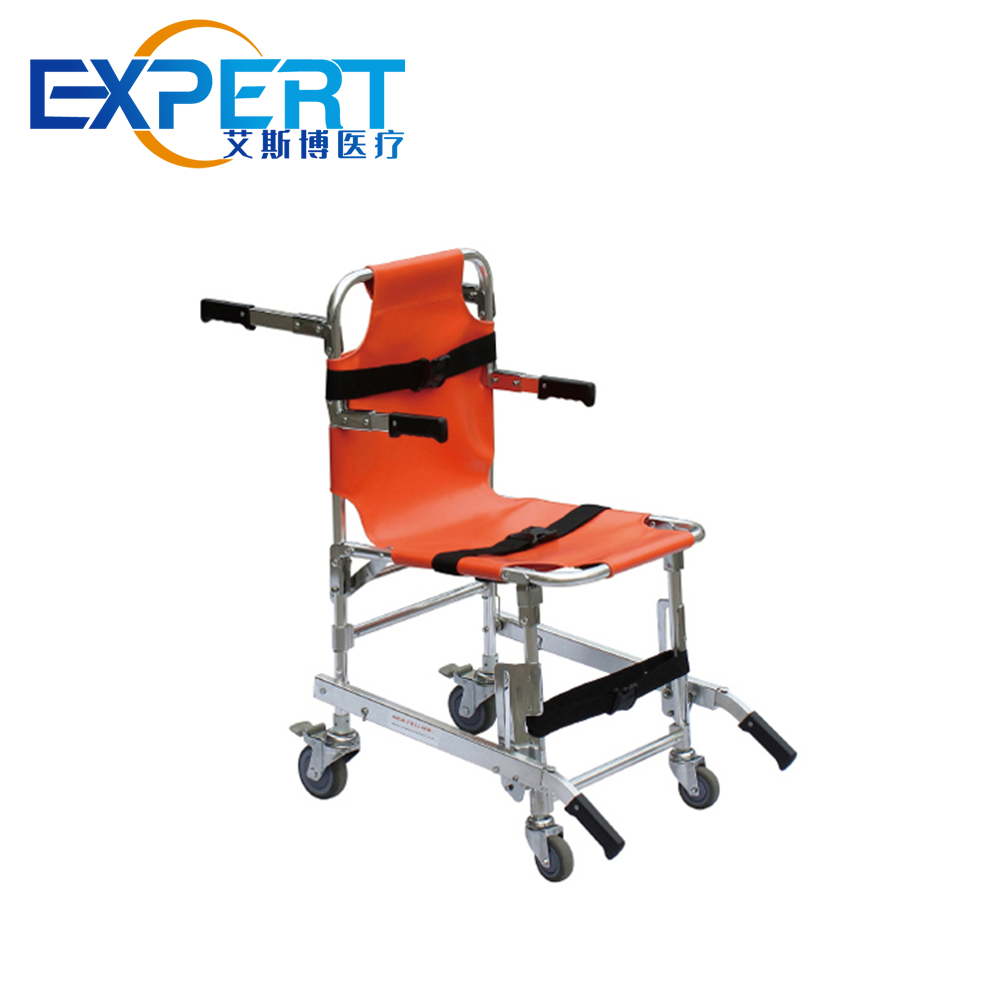Address
304 North Cardinal St.
Dorchester Center, MA 02124
Work Hours
Monday to Friday: 7AM - 7PM
Weekend: 10AM - 5PM
Welcome to My Blog!
Before we dive into the content, if you’re interested in our products or have any questions, please feel free to visit our Contact Us page on the website. Our team is ready to assist you with inquiries, orders, or any support you may need.
Now, let’s get started on our journey together. I hope you find the content here insightful, engaging, and valuable.

Choosing the best ambulance stretcher for your needs is a critical decision that can impact the efficiency of emergency medical services (EMS) and patient outcomes. With numerous options available in the market, each with varying features and capabilities, it’s essential to understand what makes an ambulance stretcher suitable for different scenarios. This comprehensive guide will help you navigate the complexities of selecting the right stretcher by covering the types, key features, cost considerations, and maintenance requirements.
An ambulance stretcher, also known as a gurney, is a medical device used to transport patients in emergency situations. It is designed to provide stability and comfort during transit while ensuring the safety of both the patient and the EMS personnel. Understanding the basic types and components of ambulance stretchers is the first step in making an informed choice.
Manual Stretchers: These are operated manually, requiring physical effort to lift and transport the patient. They are typically more affordable and suitable for situations where power resources are limited. Manual stretchers are often made of sturdy materials such as aluminum or steel to ensure durability. They may feature adjustable height settings to accommodate different vehicle types and patient care needs. In rural or remote areas where electrical outlets and charging stations are scarce, manual stretchers serve as a reliable solution. Moreover, they are relatively easy to maintain, usually only requiring regular checks of the wheels and moving parts to ensure smooth operation.
Powered Stretchers: These use battery-powered systems to assist with lifting and lowering the stretcher, reducing the physical strain on EMS personnel. They are ideal for high-frequency use and in scenarios where quick effortless, operation is necessary. Powered stretchers come equipped with advanced control systems that allow for precise adjustments in height and position. The battery life is often designed to last through multiple shifts, with some models offering quick-charge capabilities to minimize downtime. In busy urban emergency settings, where rapid patient turnover is crucial, powered stretchers can significantly enhance efficiency. They also prove invaluable in situations where patients require delicate handling, such as spinal injuries, as the powered mechanisms can maintain a more consistent and stable movement.
Bariatric Stretchers: Designed to accommodate heavier patients, these stretchers offer reinforced frames and wider platforms to ensure patient safety and comfort. Bariatric stretchers undergo rigorous weight testing to guarantee they can safely support individuals well above average weight capacities. The materials used are not only strong but also comfortable, with padding that can distribute weight evenly to prevent pressure points. These stretchers often include specialized securing devices that can restrain safely patients without causing discomfort. In medical facilities and emergency services that frequently encounter bariatric patients, having these specialized stretchers is essential to provide respectful and effective care.
Portable Stretchers: Lightweight and foldable, these stretchers are used in confined spaces or for quick evacuations. They are typically less feature-rich but highly practical in certain emergency scenarios. Portable stretchers can be quickly deployed in situations such as building collapses, where space is limited and traditional stretchers cannot be used. Their compact design allows them to be stored in small spaces, making them ideal for places like office buildings, schools, or public transportation hubs. While they may lack some of the advanced features of other stretchers, their simplicity often means they are less prone to mechanical issues and can be operated with minimal training.
Patient safety and comfort are paramount when selecting an ambulance stretcher. Features such as adjustable backrests, secure restraints, and high-quality mattresses can significantly enhance patient care during transport. Consider stretchers with integrated safety mechanisms to prevent accidental drops or movements.
The ease of operation is crucial for EMS personnel who frequently handle stretchers in high-pressure environments. Powered stretchers with automated lifting and lowering mechanisms can reduce physical strain and expedite patient handling. Additionally, intuitive controls and lightweight designs can enhance maneuverability.
Ambulance stretchers are subject to rigorous use and need to withstand various environmental conditions. Opt for stretchers made from high-quality materials such as reinforced aluminum or stainless steel. Check for certifications and compliance with industry standards to ensure long-term durability and reliability.
Consider the mobility features of the stretcher, including the size and type of wheels, turning radius, and braking system. For ambulance interiors with limited space, look for compact and foldable designs that can be easily stored when not in use.
While it is essential to invest in a high-quality stretcher, budget constraints are a reality for many EMS organizations. Assess the cost-benefit ratio by comparing features, durability, and long-term maintenance costs. Here’s a simplified cost analysis table to help you evaluate different options:
| Feature | Manual Stretchers | Powered Stretchers | Bariatric Stretchers |
|---|---|---|---|
| Initial Cost | $1,000 – $3,000 | $5,000 – $10,000 | $8,000 – $15,000 |
| Maintenance Cost | Low | Moderate | Moderate |
| Lifespan | 5-10 years | 7-12 years | 7-12 years |
| Ease of Use | Moderate | High | Moderate |
| Patient Comfort | Basic | High | High |
| Weight Capacity | Standard | Standard | High |
Ensure that your EMS team receives adequate training on using the chosen stretcher model. Many manufacturers offer training programs and ongoing support to help users maximize the benefits of their equipment. This can reduce the risk of misuse and enhance overall efficiency.
An adjustable height feature allows EMS personnel to raise or lower the stretcher to a convenient level, facilitating patient transfers. An adjustable backrest helps position the patient comfortably, especially those with respiratory issues.
Safety rails and secure locking mechanisms prevent the patient from falling off the stretcher during transport. These features are particularly important during rapid movements or when navigating uneven terrain.
Consider stretchers with integrated IV poles and accessory attachments. These features allow for the attachment of medical equipment, such as IV drips and monitoring devices, which are crucial during patient transport.
Choose stretchers with waterproof and easy-to-clean materials to maintain hygiene standards. Removable and washable mattresses are particularly useful for quick sanitization between uses.
For powered stretchers, battery life and charging options are critical considerations. Ensure the stretcher has a long battery life to handle multiple transports and comes with convenient charging solutions to avoid downtime.

Regular maintenance is essential to ensure the longevity and functionality of ambulance stretchers. Establish a routine maintenance schedule that includes:
Choosing the best ambulance stretcher for your needs involves careful consideration of various factors, including patient safety, ease of use, durability, mobility, cost, and support. By understanding the different types of stretchers and their key features, you can make an informed decision that enhances the efficiency of your EMS operations and improves patient care. Investing in a high-quality, reliable stretcher tailored to your specific requirements ensures long-term benefits and operational success.
What is the primary difference between manual and powered ambulance stretchers?
The primary difference is that manual stretchers require physical effort to lift and transport patients, while powered stretchers use battery-powered systems to assist with these tasks, reducing the physical strain on EMS personnel.
How do I determine the right stretcher for bariatric patients?
For bariatric patients, choose a stretcher specifically designed with a higher weight capacity, wider platform, and reinforced frame to ensure safety and comfort.
What are the maintenance requirements for ambulance stretchers?
Maintenance requirements include regular inspections for wear and tear, cleaning after each use, lubricating moving parts, and, for powered stretchers, maintaining battery life through regular charging and replacement.
Can ambulance stretchers be customized?
Yes, many manufacturers offer customization options for ambulance stretchers, including adjustable height, backrest positions, integrated IV poles, and accessory attachments to meet specific needs.
How important is training for using ambulance stretchers?
Training is crucial for ensuring that EMS personnel can operate the stretchers safely and efficiently. Proper training minimizes the risk of misuse and enhances the overall effectiveness of patient transport.
